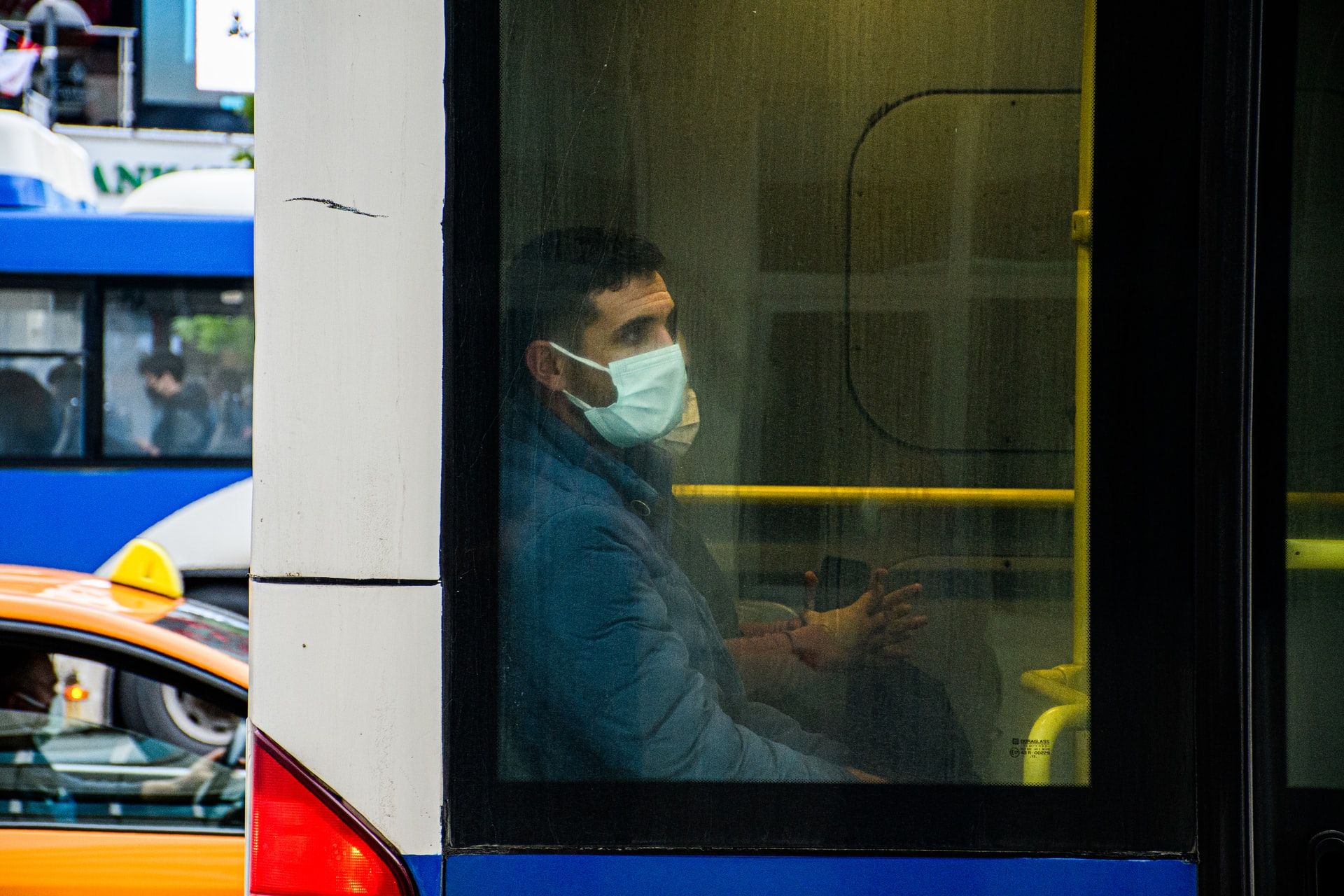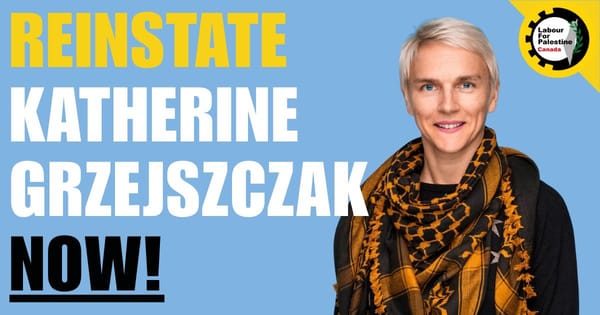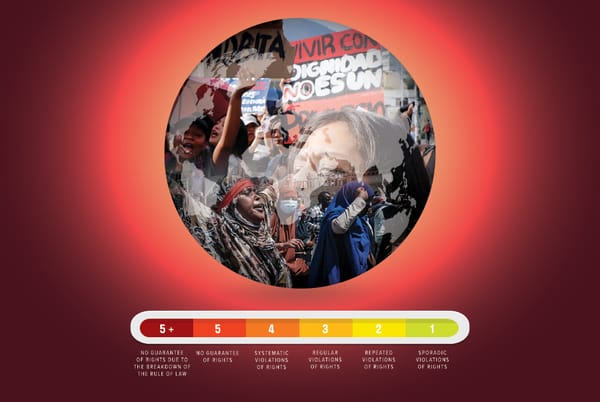
Across the country we are, unfortunately, finishing the year much as we started it. COVID-19 cases are again on the rise, and provincial governments are mostly asleep at the wheel — reluctant to do much beyond limit the numbers of people at “private gatherings” and, thankfully, increase the availability of booster vaccine shots.
Here in Ontario, positive cases are cresting toward 4,000 per day, with the Omicron variant and the persistence of a small but troublesome number of unvaccinated people generating further risk.
In Kingston, where I live, hospitals and the local public health unit have been dealing with an especially large per capita number of new COVID-19 cases. As of December 20, there were 1,574 active cases in Kingston and the surrounding area, with 13 people in the ICU and 10 on ventilators. Anecdotally, many public-facing workplaces have either shut down early for the holidays or are now reducing hours, staff and indoor capacity. Workers will be expected to bear the resultant loss of income.
When we launched the Class Struggle newsletter back in March of this year, our first issue outlined what a “just reopening” that put workers’ interests first would look like. At the time, many provinces seemed to be heading into a situation where COVID-19 risk was low or manageable and a return to some semblance of normalcy was possible. Not long after that we were in a “third wave,” again back in a lockdown with fewer available economic supports.
The four labour reforms that I called for in that first newsletter edition — national paid sick days, stronger employment standards enforcement, more health and safety inspections, and easier access to unionization — are still largely unfulfilled, despite the myriad of social inequalities revealed by the pandemic.
The federal government has now passed 10 paid sick days into law for federally-regulated workers, though in the form of a ridiculous “accrual” model where workers “earn” one day per month of paid sick leave. British Columbia will start providing five paid sick days in January. But beyond this, we’re no further ahead.
On the employment standards enforcement front, little has changed. Ontario announced that the ministry of labour would “get tough” on temporary help agencies notorious for exploiting vulnerable workers.
Evidence from the United States suggests that labour violations — particularly wage theft — went up during the pandemic. It’s difficult to imagine the story is any different here, particularly given that labour inspectors have of course been reduced to doing much of their investigative work from their desks rather than visiting workplaces accused or at high risk of violating workers’ rights. It’ll take a lot more resources and political will to meaningfully address what we already know is a pattern of widespread employment standards violations across provinces.
After an initial “blitz” of health and safety inspections when it became undeniable that workplaces were major sites of COVID-19 inflection, ministries of labour have largely backed off. It seems that provincial governments have mostly returned to the status quo of treating health and safety as a matter for employers and workers to work out on the job — despite the majority of workers lacking the bargaining power to hold bosses to acceptable standards.
When it comes to unionization, we’ve seen no major efforts to extend collective bargaining. The pandemic generated an uptick in interest in unionization, as workers saw the positive impact that unions had on job security. Some small breakthroughs in retail have been promising, but nothing has materialized that could turn the tide on the now decades-long fall in private sector union density. Capitalizing on the renewed interest in unionization to push for labour law reform should be top of mind for the Canadian labour movement.
At the federal level, things have looked marginally better — though, it’s all relative I suppose. On December 14, the Justin Trudeau Liberals released their fall Economic and Fiscal Update (EFU). The government used this opportunity, as is usually the case, to reiterate previous budget commitments, as well as to praise their performance since passing the federal budget in April.
As the EFU makes clear, the pandemic economic recovery has improved considerably, with growth and government revenue projections higher than were anticipated in Budget 2021. Both economic growth and key labour market indicators have improved. The government projects a 12.5 per cent rebound in nominal GDP growth in 2021, followed by 6.6 per cent growth in 2022.
This quite rapid GDP growth, combined with rising revenues will cause the historic early-pandemic budget deficit to shrink by 80 per cent in 2022-23. As a share of GDP, federal debt had risen rapidly in 2020-21 in response to the COVID-19 crisis, but will now fall faster than projected in the April budget. Moreover, after having doubled initially as a share of GDP, direct spending on programs will also fall faster than initially expected, returning to 2019 levels by 2025-26.
A much hoped for expansion of the social welfare state in the post-pandemic economy seems to be nowhere in sight. Instead, the government plans to return to the economic conditions of 2019, albeit with some minor reforms to Employment Insurance (EI) and a new child care system to plug these gaping holes.
The EFU also reports that the Canadian economy has recovered 106 per cent of jobs lost since the beginning of the pandemic. This achievement, they claim, justifies the decision to wind down COVID-19 economic support programs, such as the Canada Emergency Wage Subsidy and the Canada Recovery Benefit (CRB) and replace them with more targeted benefits.
Although the official unemployment rate of 6 per cent is the lowest since the beginning of the pandemic, and is expected to fall to around 5.7 per cent before stabilizing at that level over subsequent years, this remains well short of full employment. Moreover, long-term unemployment (those out of work for more than six months) remains well above the 2019 average, while many others are still working reduced hours.
With COVID-19 cases again rising, workers are likely to face difficulties accessing necessary support now that the CRB has been cancelled. The newly introduced Canada Worker Lockdown Benefit is not costed at all in the EFU, just as it was uncosted in Bill C-2, which introduced it. In all likelihood, the government assumed that no new lockdowns would be imposed and the potential expense associated with the benefit would be negligible. There’s now considerable risk that Omicron could see businesses reducing hours and staff without the declaration of full public health order lockdowns, leaving workers without access to EI nowhere to turn for income replacement. The lack of planning around income support benefits in the face of new variants demonstrates why winding down the CRB too soon was a terrible idea.
The EFU does outline a total of $8.12 billion in new spending not previously earmarked in Budget 2021. Some of these new items are encouraging, and include: $37.4 million over three years to assist with the implementation of the vaccine mandate in federal workplaces; $1.7 billion to Health Canada and the Public Health Agency of Canada to aid provinces and territories in securing and distributing rapid tests, as well as an additional $2 billion over two years to support the procurement of COVID-19 therapeutics; $742.4 million in one-time payments to help seniors who received COVID-related aid that resulted in their Old Age Security/Guaranteed Income Supplement payments being clawed back; $67.9 million in “student debt relief” to help those who received, but were ineligible for Canada Emergency Response Benefit (CERB) (relief will be in the form of forgiving the difference between what such students received through the CERB and what they were entitled to through the Canada Emergency Student Benefit); $24 billion to compensate First Nation children and families who suffered at the hands of First Nation child welfare; $85 million in 2022-23 to process more permanent and temporary resident applications and reduce processing time, along with $1.3 billion over six years to support the passage and resettlement of more than 40,000 Afghan families.
While this new spending is important, it also falls far short of what’s needed, particularly if we are about to be set back considerably by the onslaught of Omicron. The Liberals’ EFU makes it clear that the government intends to shift focus toward “unwinding” pandemic support and “rebalancing” the economy to focus on deficit and debt reduction over the medium-to-long term.
Conservative anxieties aside, there are thus no signs of a new era of “runaway” government spending. In fact, amid a stronger than expected recovery, the government is shifting focus to deficit and debt reduction, while introducing some marginal new spending in the short term — much of it long overdue.
With the Omicron variant and rising numbers of COVID-19 cases across the country, now is not the time to be ending pandemic support or shifting focus away from ensuring a just recovery. The government should instead be addressing the pressing needs of Canadian workers, and fulfilling commitments for a national pharmacare program, EI reform that leaves no worker benefit, and green job creation to address climate change and income inequality.
Of course, we’re getting exactly what is expected from a Liberal government. It’s on us to build the power necessary to win the things we truly need.
This was the last Class Struggle edition of the year.
If you haven’t already, please consider becoming an annual Passage member. As a 100 per cent reader funded non-profit, paying members make possible the important work that Passage does, including publishing the Class Struggle newsletter. Since March, my goal has been to make this newsletter a place to turn for critical commentary on the state of the labour movement and social and economic policy in Canada. Your financial support will help make sure we can continue with this work in the months and year ahead.
Have a safe and happy holiday season, and look for the next edition of Class Struggle in your inbox in January.







